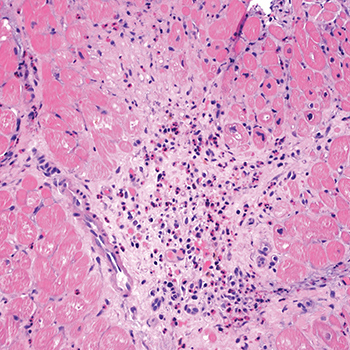Abstract
Eosinophilic myocarditis (EM) is a rare cause of acute heart failure. It can occur secondary to drug hypersensitivity, autoimmune diseases such as vasculitis, idiopathic hypereosinophilic syndrome (HES) or malignancy, but is often under-recognized and underdiagnosed, being confused with other causes of heart failure. While EM is associated with various clinical symptoms, it is rarely associated with cardiac tamponade that requires urgent pericardiocentesis. Here we describe a patient with EM who presented with cardiac tamponade and decompensated heart failure likely secondary to autoimmune disease.
References

Views: 436
HTML downloads: 62
PDF downloads: 386
Published:
2022-09-20
Issue:
2022: Vol 9 No 9
(view)










